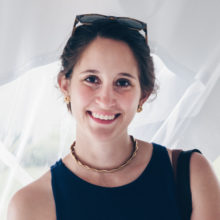Graduate Student, MIT
Email
Abstract
Scalable Solid State Quantum Information Processing
Quantum computation and communication systems leverage the advantages of quantum information to surpass their classical counterparts in certain applications. However, while proof-of-principle experimental demonstrations have been performed, these are limited to a handful of nodes with limited – and often immutable – connectivity. Here we demonstrate a solid state quantum computation platform that promises the scalability necessary for general-purpose quantum computing.
Pre-characterized solid state quantum nodes (nitrogen vacancy centers in diamond nanophotonic structures) are placed into a photonic integrated circuit which allows for low-loss and phase-stable collection, routing, and detection of photons as well as on-chip state manipulation and classical control. Moreover, the fabrication of high-quality photonic resonators in diamond allows for the increased emission and collection rates of photons coherent with the spin state. These two advances will lead to an on-chip entanglement rate much larger than the decoherence rate, allowing the creation and maintenance of cluster states for quantum computation.
Bio
Sara Mouradian is currently a PhD candidate in the group of Prof. Dirk Englund at MIT. She earned her Bachelor’s and Master’s degrees from MIT in 2010 and 2012 respectively. During her Master’s thesis she implemented a quantum-enhanced sensing protocol under the supervision of Prof. Jeffrey Shapiro and Dr. Franco Wong. Between finishing her Master’s and beginning her PhD she spent six months at the Max Planck Institute for the Science of Light implementing a fiber-based cavity for enhanced light-matter interactions.
She is interested in demonstrating platforms for quantum communication and computation that can be scaled beyond proof-of-principle demonstrations. Her PhD focuses on the negatively charged nitrogen vacancy center in diamond which provides second-scale spin coherence times for information storage, though the entanglement rate is currently much lower due to low photon collection. Her PhD focuses on improving the optical properties via novel photonic crystal cavity designs and nanofabrication techniques as well as integrating these optimal diamond nodes into a larger photonic integrated circuit for on-chip state-manipulation, photon routing, and detection.
She also leads MIT’s interdisciplinary Quantum Information Science and Engineering (iQuISE) student group which holds weekly seminars and interviews from researchers in academia and industry.
